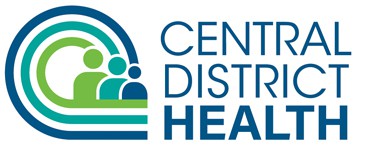States are investigating cases of high blood lead levels (BLLs) in children who ate recalled cinnamon-containing applesauce products that were found to have high levels of lead.
As of November 7, 2023, 22 cases across 14 states have been identified of children 1 to 3 years of age with BLLs ranging from 4 to 29 micrograms per deciliter (µg/dL). To date, no cases have been identified in Idaho, but health officials are alerting providers that the tainted product was likely sold here. Cases reported in other states experienced signs and symptoms including headache, nausea, vomiting, diarrhea, change in activity level, and anemia.
Multiple lots of the applesauce products tested positive for extremely high levels of lead. WanaBana, Schnucks, and Weis have initiated voluntary recalls of certain lots of the following products:
· WanaBana brand apple cinnamon fruit purée pouches
· Schnucks brand cinnamon applesauce pouches
· Weis brand cinnamon applesauce pouches
More information about the specific recalled products may be found on the FDA’s website: Investigation of Elevated Lead Levels: Applesauce Pouches (November 2023) | FDA
Recommendations for Clinicians
Managing acute lead poisoning includes eliminating the exposure, providing supportive and symptomatic care, and quantifying lead exposure by checking BLLs. Children who are symptomatic with elevated BLLs above 45 µg/dL may require hospital admission for monitoring and chelation therapy using medications such as succimer, dimercaprol, or edetate calcium disodium (EDTA). Healthcare providers can find recommendations on management of childhood lead exposure and other resources on the Pediatric Environmental Health Specialty Units website.
1. Counsel patients or their caregivers and guardians not to eat products named in the FDA recall announcements.
2. Test children who have consumed a recalled applesauce pouch product for lead exposure. Clinicians may refer to CDC’s guidance on testing children for lead exposure. The American Academy of Pediatrics has also published clinical guidance for managing lead exposure in children. 3. Educate patients or their caregivers and guardians about the health effects of lead exposure in children and the importance of seeking medical care. Most children have no obvious symptoms, but appropriate screening can detect lead in blood.
4. Report cases to Central District Health at 208-327-8625, if you identify children with BLLs above the reference value, including those who have consumed these recalled products. CDC recommends a blood lead reference value (BLRV) of 3.5 µg/dL to identify children with BLLs that are higher than most.
5. Consider lead exposure in the differential diagnosis of patients presenting with compatible clinical findings associated with lead poisoning, which may include the following:
a. Constitutional symptoms such as generalized weakness, fatigue, malaise, arthralgias, myalgias, irritability, anorexia, insomnia, and weight loss.
b. Abdominal pain (“lead colic”), constipation, nausea, and other gastrointestinal symptoms.
c. Anemia (normochromic or microcytic, possibly with basophilic stippling).
d. Central nervous system effects, such as headache, impaired visual-motor coordination, tremor, and, in severe cases, seizure, encephalopathy, and coma.
e. Stunted growth, hearing problems, impaired neurobehavioral development, decreased intelligence, and failure to meet expected developmental milestones.
f. Impaired kidney function, such as acute tubular dysfunction.
6. Obtain a detailed exposure history in patients with suspected lead exposure, including those who consumed a recalled product. Ask about household members with known lead exposures and possible lead sources in and around the home. Parents and caregivers who work in jobs, hobbies, or other activities that expose them to lead can bring lead-containing dust home with them that can be tracked onto carpets, floors, furniture, and other surfaces that a child may touch, and expose other family members without knowing.
7. Obtain early consultation with or provide a referral to a medical toxicologist or pediatric specialist with expertise in managing lead exposure for medical workup and managing patients with high BLLs.
8. Contact Idaho’s poison center (1-800-222-1222) for advice on diagnosing and managing lead toxicity.
Resources
Idaho Division of Public Health Childhood Lead Poisoning Prevention Program · Childhood Lead Poisoning Prevention Program (CLPPP) · Childhood Lead Newsletter (Volume 2, June 2023).
Food and Drug Administration · Investigation of Elevated Lead Levels: Applesauce Pouches (November 2023) · MedWatch Online Voluntary Reporting Form · MedWatch Consumer Voluntary Reporting Form · Consumer Complaint Coordinators
Centers for Disease Control and Prevention/Agency for Toxic Substances and Disease Registries · Childhood Lead Poisoning Prevention Program · Guidelines and Recommendations · Testing Children for Lead Poisoning · Blood Lead Levels in Children · Toxicological Profile for Lead · Lead ToxFAQs American College of Medical Toxicology

